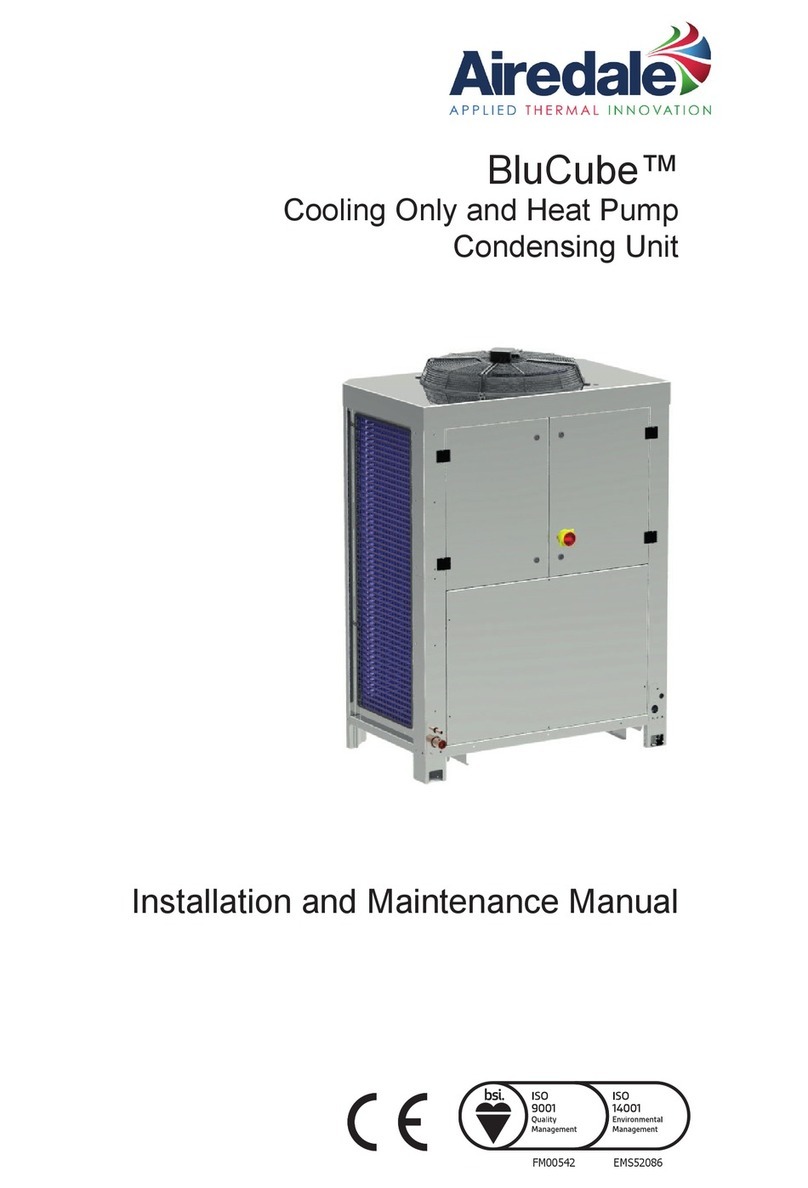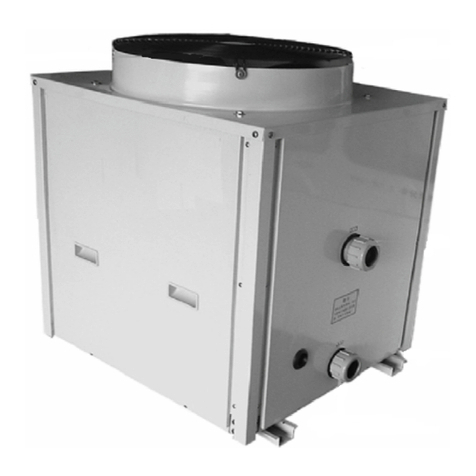
3
THE UNIT HAS ITS OWN PUMP-DOWN MODE. USE THE PUMP-DOWN
MODE WHILE VACUUMING THE UNIT. VACUUMING TOO LOW CAN
CAUSE INTERNAL ELECTRICAL ARCING, RESULTING IN ADAMAGED OR
FAILED COMPRESSOR.
CAUTION
SHIPPING INSPECTION
Always keep the unit upright; laying the unit on its side
or top may cause equipment damage. Shipping damage,
and subsequent investigation is the responsibility of
the carrier. Verify the model number, specications,
electrical characteristics, and accessories are correct
prior to installation. The distributor or manufacturer will not
accept claims from dealers for transportation damage or
installation of incorrectly shipped units.
This product is designed and manufactured to comply
with national codes. Installation in accordance with such
codes and/or prevailing local codes/regulations is the
responsibility of the installer. The manufacturer assumes
no responsibility for equipment installed in violation of any
codes or regulations. Rated performance is achieved after
20 hours of operation. Rated performance is delivered at
the specied airow. See outdoor unit specication sheet
for split system models or product specication sheet for
packaged and light commercial models. Specication
sheets can be found at www.goodmanmfg.com for
Goodman®brand products or www.amana-hac.com for
Amana®brand products. Within the website, please select
the residential or commercial products menu and then
select the submenu for the type of product to be installed,
such as air conditioners or heat pumps, to access a list
of product pages that each contain links to that model’s
specication sheet.
The United States Environmental Protection Agency (EPA)
has issued various regulations regarding the introduction
and disposal of refrigerants. Failure to follow these
regulations may harm the environment and can lead to
the imposition of substantial nes. Should you have any
questions please contact the local oce of the EPA.
If replacing a condensing unit, heat pump or air handler,
the system must be manufacturer approved and Air
Conditioning, Heating and Refrigeration Institute (AHRI)
matched.
NOTICE
Outdoor inverter units are approved for operation above
0°F in cooling mode and -20°F (RH10%) in heating mode
with no additional kit necessary.
Damage resulting from operation of the units in a structure
that is not complete (either as port of new construction or
renovation) is not covered by our warranties.
FEATURES
This heat pump is part of a ComfortBridge™ control system
that uses inverter technology to more eciently control
heat gain/loss with better eciency and achieve targeted
comfort conditions.
The system utilizes digital communication between the
indoor and outdoor equipment and can be controlled by
any single-stage thermostat.
The ComfortBridge control system reduces the number
of required thermostat wires, provides additional setup
features and enhanced diagnostics through Bluetooth
connectivity with the CoolCloud™ app.
Due to components using inverter technology, the heat
pump will not function properly if used with a non-approved
control system.
NOTICE
Special consideration must be given to location of the heat
pump unit(s) in regard to structures, obstructions, other
units, and any/all other factors that may interfere with air
circulation. Where possible, the top of the unit should be
completely unobstructed; however, if vertical conditions































